BlackBerry 10.2: what's new?
Last week, a new version of the BlackBerry operating system was released under the number 10.2 (to be more precise, OS version: 10.2.0.1791, software version: 10.2.0.424). Only 10 months have passed since the release of this platform, but this is the third (after 10.1 and 10.1 Maintenance Release) update, it is also the largest. Many rightly believe that it was with 10.2 on board that the Canadian company was supposed to sell new smartphones based on the top ten. Below is a list of the innovations found in BlackBerry 10.2. Surely it is not complete, since the manufacturer did not provide a detailed report on the work done, limiting itself only to the list of the most notable innovations. The main source of data was Crackberry.com. Caution: under the “cut” a lot of screenshots.
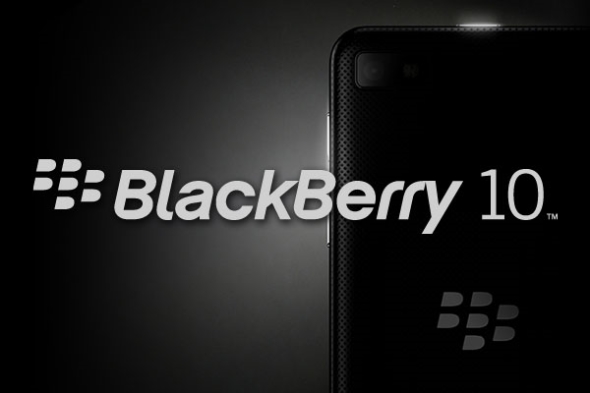
For starters, I want to touch on hardware improvements. In addition to accelerating performance, as well as optimizing power consumption, BlackBerry 10.2 made friends with Bluetooth 4.0 LE, Wi-Fi-Direct, Miracast and USB On-The-Go. Support for a particular technology depends on the particular smartphone, the table below is for clarity:

As you can see, the “first-born” Z10 device became the most deprived, which the manufacturer explains using communication chips that “do not support new standards”. Despite the fact that one of the versions of Z10 (of which, I recall, two, differing in processors) theoretically has a more “fresh” chip, BlackBerry apparently decided to put everyone under the same denominator in order to avoid displeased exclamations of discrimination. The newest model of the family, Z30, received support for all standards, which is not surprising - the device appeared on store shelves only this month. He also introduced in BlackBerry 10 a new display resolution - 1280x720 pixels. Let me remind you: in Z10 this parameter is 1280x768 pixels, while in keyboard devices the screen displays an image of 720x720 pixels. Prior to FullHD screens, Canadian company’s smartphones,
Now it’s the turn of software improvements, which, I must admit, are not few:
Preview notifications on a locked screen. In addition to displaying notification counters, BlackBerry 10.2, when you click on a particular type, shows a brief summary of the last four of them. This option can be turned off if, for example, you use a password to unlock the device and do not want outsiders to see even a brief summary of the information intended for you.

Toast notifications with instant response. In case of receiving a new system message, SMS, BBM, mail, etc. At the top of the screen, a notification with brief contents will be displayed. For some types of notifications (SMS and BBM), there is the possibility of a response directly from the notification without the need to go to the Hub.
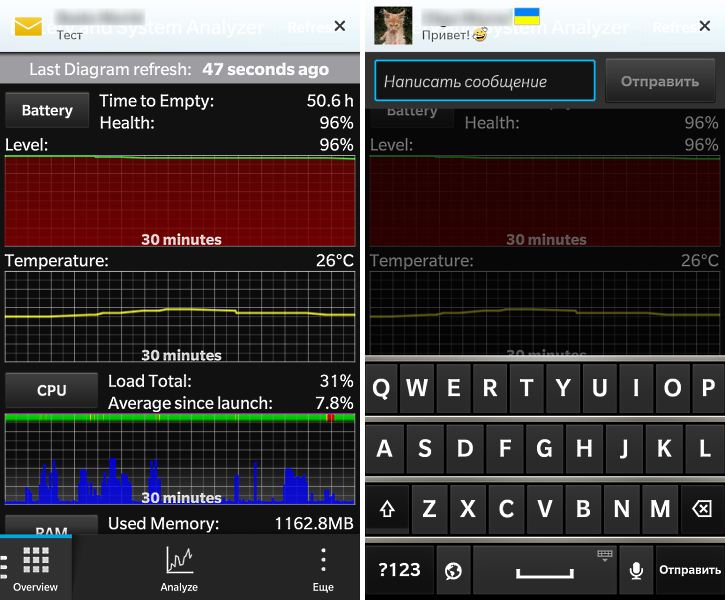
Priority Hub. The BlackBerry 10.2 hub has acquired an additional section (filter) that automatically collects messages that are of the highest priority for the user. The main criteria for getting information into the Priority Hub: the sender's last name coincides with the last name of the smartphone owner, the conversation is started by the user of the device, or the received mail message has a high priority. It is also possible to manually add (as well as delete) the addressee, or the entire conversation, to this section. All messages from the Priority Hub are marked with a vertical red line to the right for greater clarity.
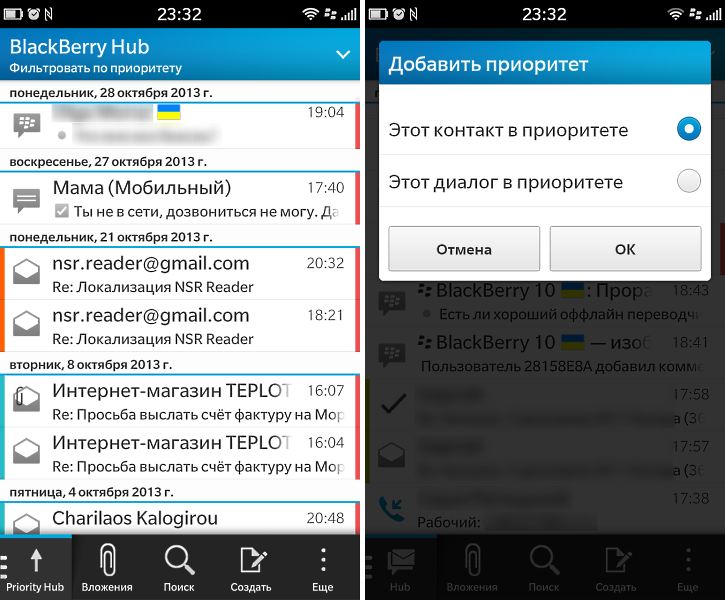
Display attachments. Another new option in the Hub allows you to view all attachments received by e-mail. Especially useful for people receiving a large number of electronic documents, images, etc. Files can be sorted by date of receipt, sender, name and type.
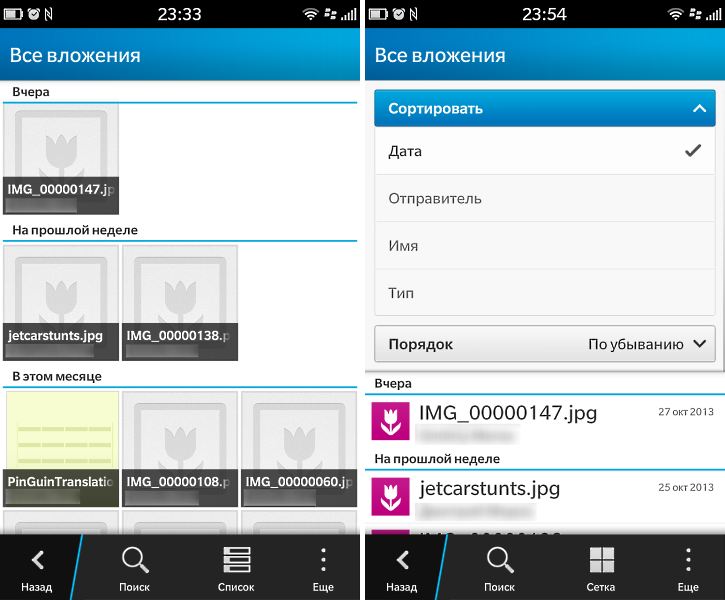
Sending SMS when a call is canceled. This option allows you to automatically send the caller one of the three predefined SMS messages when canceling an incoming call.

"I will be late". When a reminder is triggered, this function allows you to notify all participants in a scheduled meeting that the user will be delayed. There is the possibility of choosing the required amount of time. Also worth noting is the simplified interface for creating the reminder in the calendar of the new version of the OS.
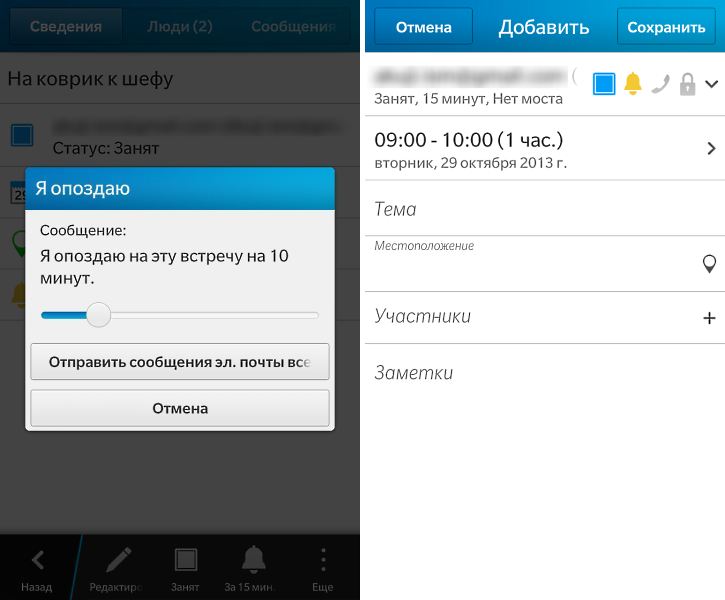
Sound when typing on the keyboard. In an effort to make the BlackBerry 10.2 keyboard even better, the Canadian company decided to “voice” the process of its use. Now pressing the Shift, Backspace buttons, as well as the ordinary “keys” is accompanied by unique sounds; A new animation for deleting a word with horizontal swipe was also added.
Updated "copy / paste" function.One of the steps to make it easier for the user to work with BlackBerry 10.2 was to simplify the copy-paste mechanism. If you hold your finger on the text, pictograms appear nearby, providing standard options for cutting, copying and pasting. Previously, selecting text required a double click on it, and the corresponding icons were in the side menu, which caused many inconveniences. Moreover, the new context menu allows you to share the selected text fragment through the sharing option, and also, when called in the browser, use the web search.
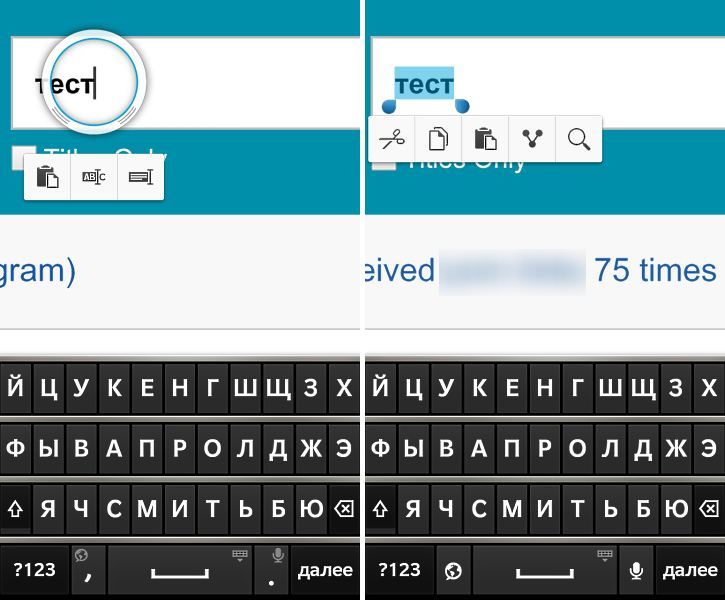
Adaptive sharing menu. The option mentioned above, which allows you to share information with all other methods available in the OS, now studies the user's preferences and substitutes the latter, as well as the most frequently used options at the top of the screen. This applies not only to programs, but also to contacts. New sharing options were also added: to meeting participants on the calendar, through the BBM Channels; it was also possible to share the address of a web page or text from the clipboard using a QR code. Finally, there is a file preview, and images can be edited immediately before sending without the need for a separate launch of the editor.
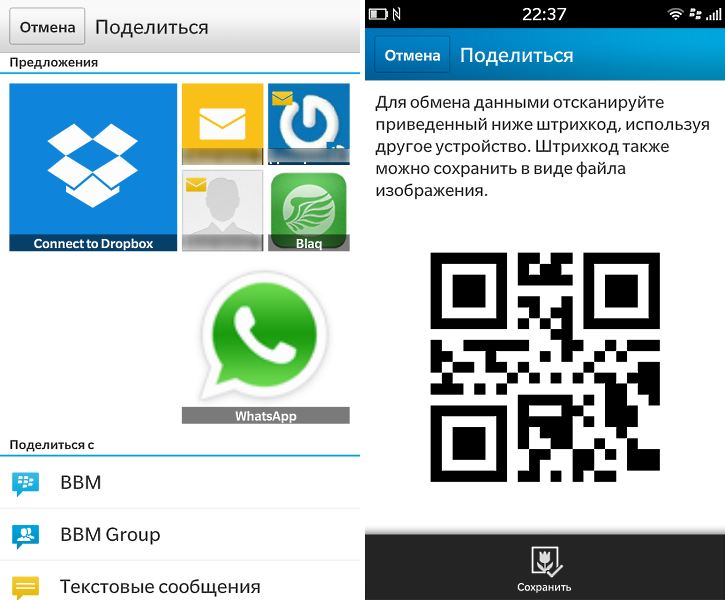
Updated Remember app and standalone Evernote client. The program for creating notes and tasks that comes with BlackBerry 10, Remember, has acquired an updated interface and new features, for example, dynamic search across all notebooks, combined with the quick addition of a new note. If you set a reminder for the task, it is automatically entered in the "Calendar". In 10.2, a separate Evernote client also appeared, which is useful to those who do not want to work with this service through Remember.
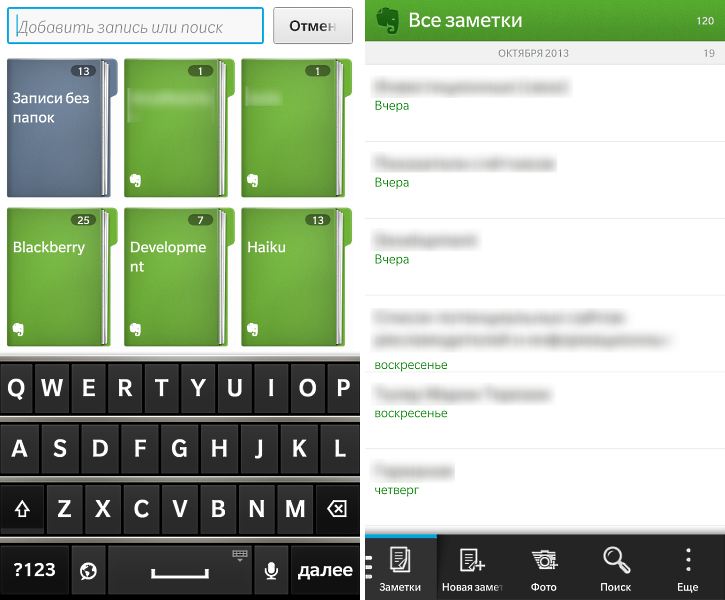
Integration of Wolfram Alpha in Voice Control. If you ask your smartphone questions like “What is the weather like in Kiev”, “When will dawn tomorrow”, “How much will it be 18% of $ 43”, or “How many days are left before the New Year”, the voice control system will use the data from Wolfram Alpha search engine to display the result. Unfortunately, due to the lack of support for the Russian language, this function is unlikely to be in demand among most residents of the CIS.
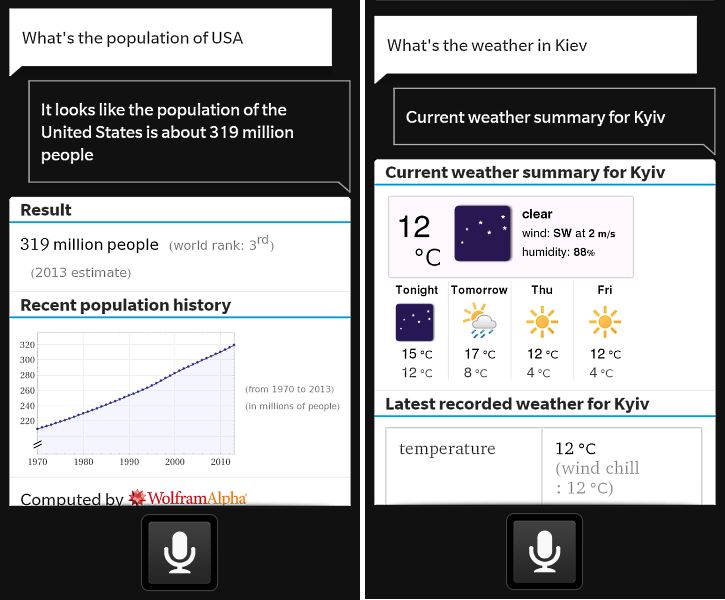
The Settings section has been rewritten using Cascades. Previously, the section with the OS settings opened for a few seconds, since it was written in Adobe AIR. For 10.2, BlackBerry programmers finally used their own Cascades framework, as a result of which the Settings open and work without a visible delay.
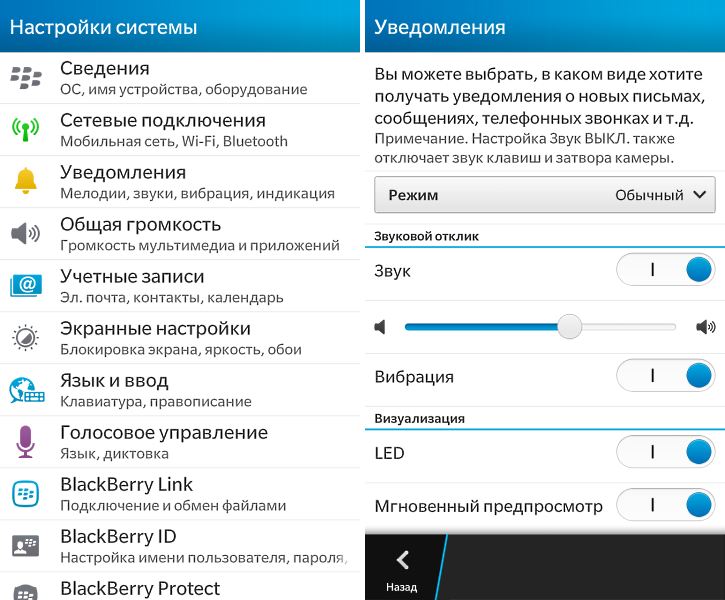
Dark or light themes. Part of the application BlackBerry 10.2 allows you to choose one of two background colors. These include: Contacts, Calendar, Text Messages and VVM. The ability to set a black background will be especially useful for users of devices with AMOLED screens - Q10 and Z30. Perhaps the list of applications that support color changing applications will be expanded in future updates to the operating system.
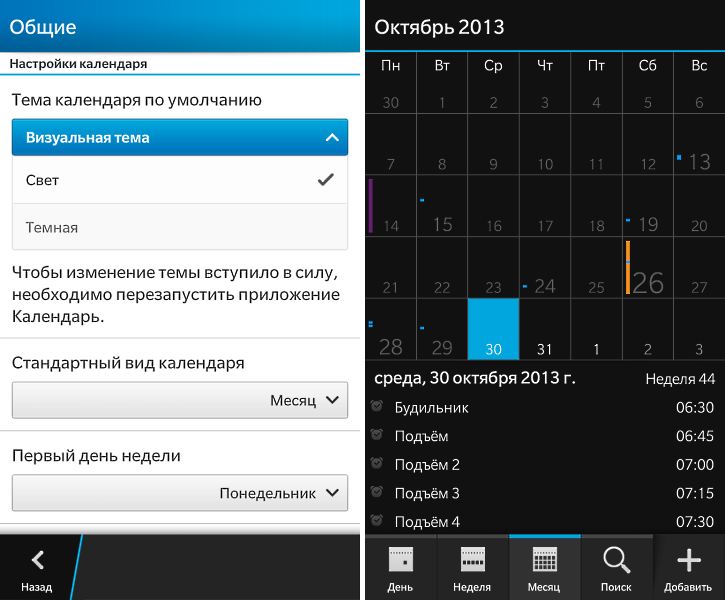
Running in the background of the application. BackBerry 10 is famous for its multitasking: up to eight applications can be launched simultaneously on a smartphone. However, for their work, it is necessary that the programs are constantly open. Version 10.2 introduced a new concept - “headless app” (literally “headless application”): the program can continue to work in the background, being closed. The BlackBerry documentation tells you more about this .
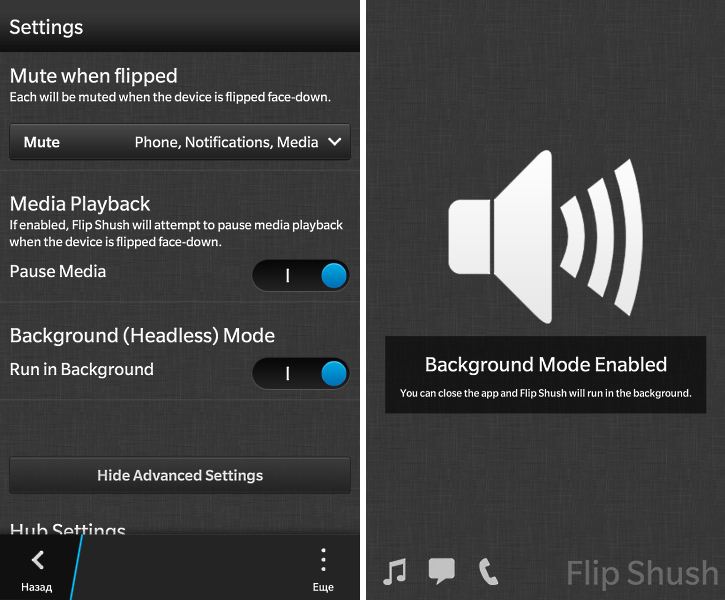
Resource monitor. BlackBerry 10.2 got at its disposal the opportunity to demonstrate running applications and services, displaying the processor load and the amount of RAM occupied for each of them. There is also an option to manually shut down a program. The resource manager is primarily intended for newly emerging background applications.
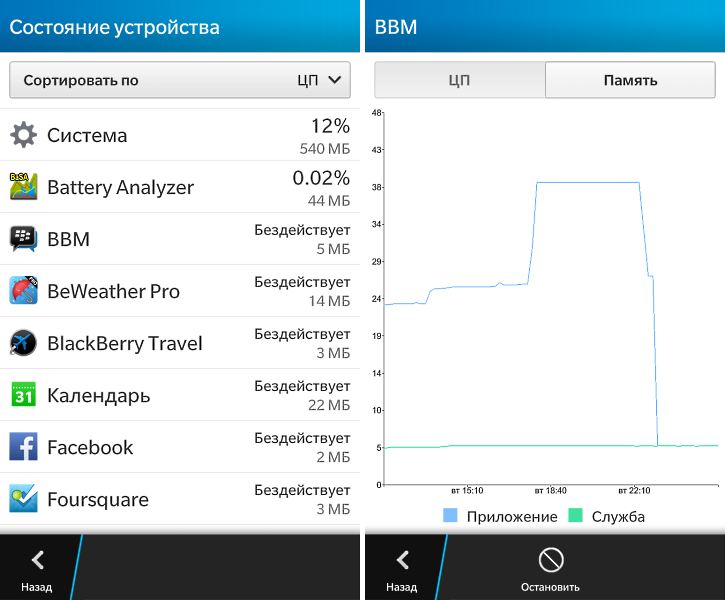
Installing applications by default. This option allows you to specify which program should open this or that type of content or files.
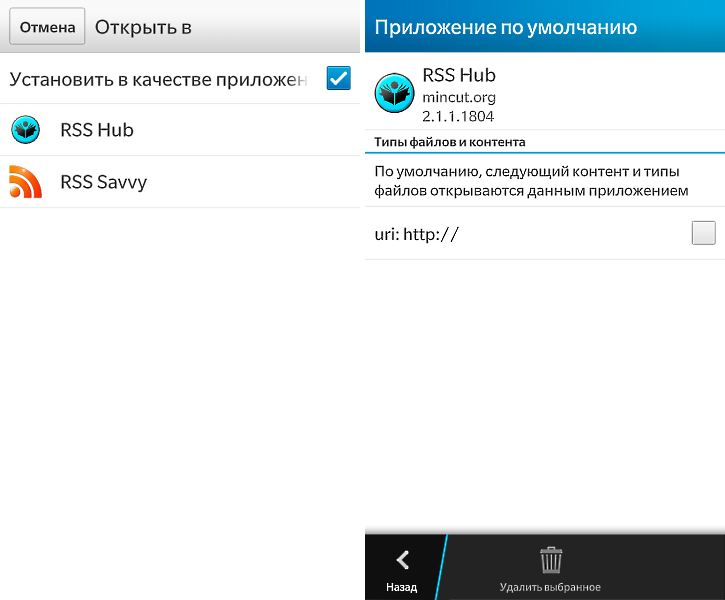
Support for Android 4.2 applications. The Dalvik virtual machine in BlackBerry OS 10.2 has been updated and now supports Android programs and games up to version 4.2.2 inclusive with hardware acceleration, which positively affected the performance. Flipboard and updated Skype are already available in the app store, and fans of manual installation of Android software can run games like Temple Run 2 on their smartphones.
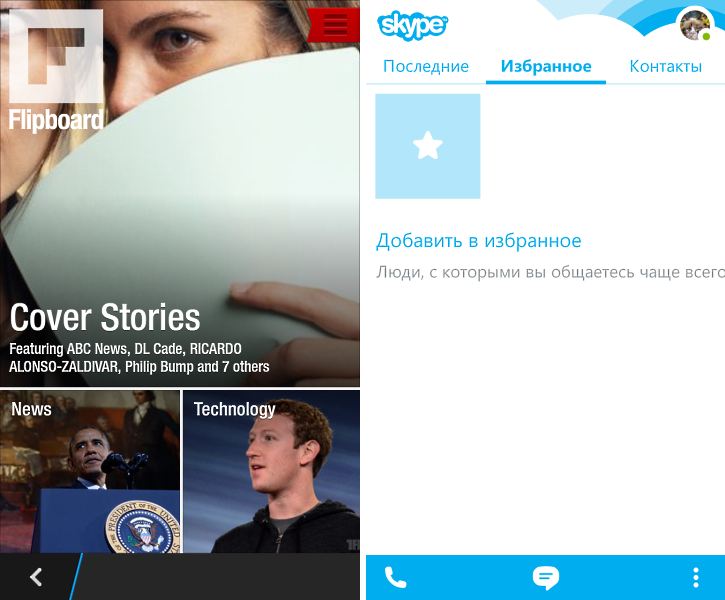
New Weather app. Changes consist in an updated interface, the ability to share weather information (automatic screenshot) with others, animation of weather effects.
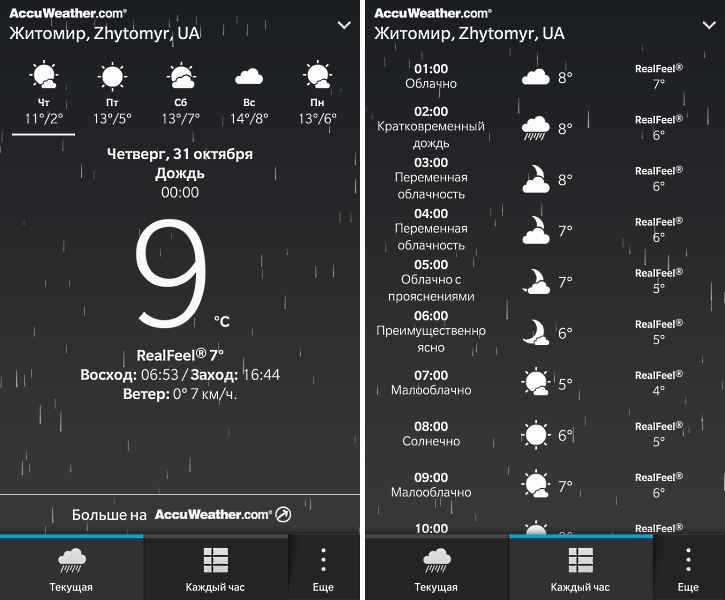
Ability to set multiple alarms. From now on, the user is not limited to one single alarm clock, but is free to set any number of them by tapping the button in the upper right corner of the section with the same name.
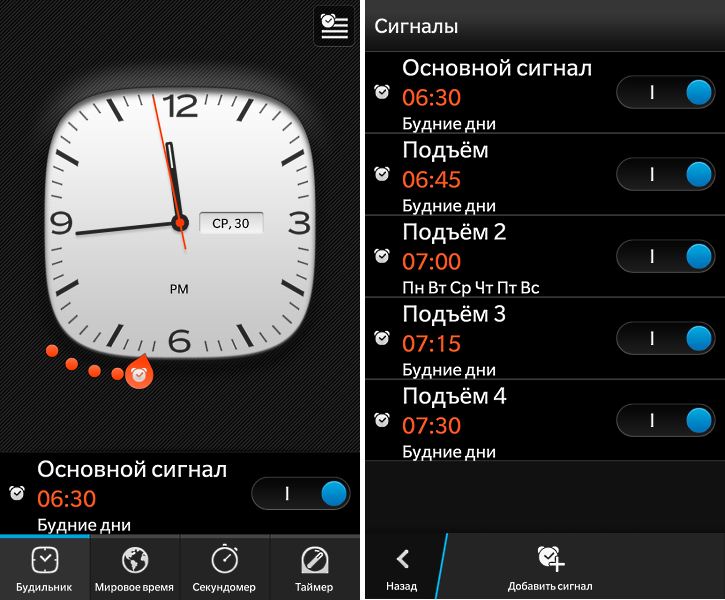
Natural Sound. This technology improves the sound quality of audio and video calls via BBM by transmitting the entire sound spectrum captured by the human ear. The following video demonstrates this most clearly:
Updated office suite Docs To Go. The list of changes (mainly related to Slideshow To Go) includes support for 100 new animations and transitions for slides, 145 SmartArt graphic elements, Rehearsal mode, virtual laser pointer, spell checking, editing slides, support for hyperlinks, improved image quality when connected via HDMI or Miracast. For all applications, the mechanism for searching and replacing text was improved, and the table editor was able to hide cells and columns, as well as dock panels.

Improvements in the browser. The speed of the browser in BlackBerry 10.2 has been significantly optimized, which can be found separately in the AnandTech note . When you hold the "Back" button, an abridged version of the story now appears, and the "Read" mode provides the ability to display white text on a dark background.

Improvements in the "Camera". The application for photo and video shooting was able to display the grid, as well as shooting with an aspect ratio of 1: 1; face recognition and focus lock have been added. You can immediately edit the photo you just took or send it via the “Share” option without having to open the gallery again. The sound simulating the shutter of the camera will no longer play if the unit is set to silent mode.

New types of smart tags when using NFC. In addition to pre-existing triggers such as opening a web page, typing a text message or starting a telephone conversation, new ones were added: “smart triggers”, Wi-Fi, Bluetooth, Contact, Event, and Geolocation. Of particular note are “smart triggers” that allow you to interact with the settings of the network and wireless interfaces, switch modes, launch applications, etc.

Integration with the car. After establishing a wireless connection between the smartphone and the car multimedia system, the OS will display the brand and logo of the car on the screen, as well as the available Bluetooth profiles. In addition, a separate section will be added to the application store with programs selected and recommended by the car manufacturer. The screenshots below are from the Crackberry.com forum.
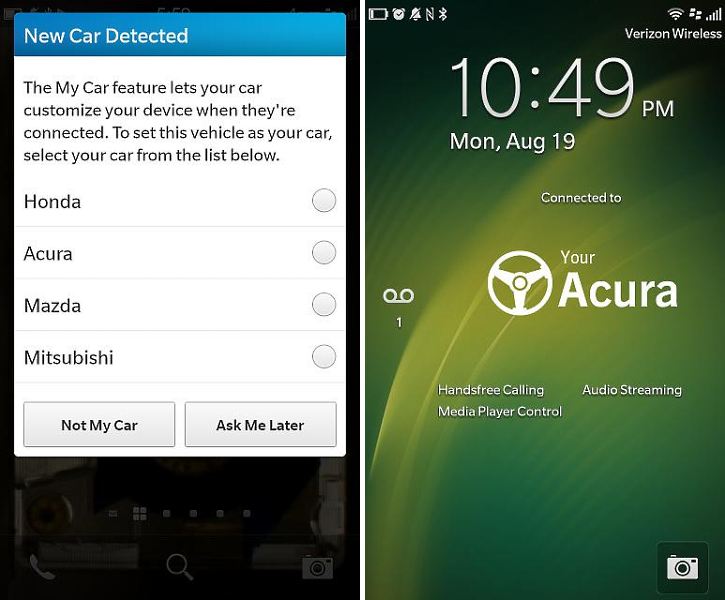
BlackBerry 10.2 just appeared officially, and the alpha versions of the firmware of the next OS version - 10.2.1 - are already available on the network. Users are expected to activate FM radio (again, with the exception of Z10), gyroscope support in the Camera application (probably for shooting panoramas), go to the next / previous letter in the Hub without having to go to the main list, switch between plain text and HTML when composing a new e-mail, playing music while using the camera, etc.
Despite the difficult situation, the Canadian company does not seem to intend to suspend the development of its own OS, which cannot but rejoice. Hopefully, new versions of the system will be released with similar regularity, and the list of changes in them will be no less than what we saw in BlackBerry OS 10.2.

For starters, I want to touch on hardware improvements. In addition to accelerating performance, as well as optimizing power consumption, BlackBerry 10.2 made friends with Bluetooth 4.0 LE, Wi-Fi-Direct, Miracast and USB On-The-Go. Support for a particular technology depends on the particular smartphone, the table below is for clarity:

As you can see, the “first-born” Z10 device became the most deprived, which the manufacturer explains using communication chips that “do not support new standards”. Despite the fact that one of the versions of Z10 (of which, I recall, two, differing in processors) theoretically has a more “fresh” chip, BlackBerry apparently decided to put everyone under the same denominator in order to avoid displeased exclamations of discrimination. The newest model of the family, Z30, received support for all standards, which is not surprising - the device appeared on store shelves only this month. He also introduced in BlackBerry 10 a new display resolution - 1280x720 pixels. Let me remind you: in Z10 this parameter is 1280x768 pixels, while in keyboard devices the screen displays an image of 720x720 pixels. Prior to FullHD screens, Canadian company’s smartphones,
Now it’s the turn of software improvements, which, I must admit, are not few:
Preview notifications on a locked screen. In addition to displaying notification counters, BlackBerry 10.2, when you click on a particular type, shows a brief summary of the last four of them. This option can be turned off if, for example, you use a password to unlock the device and do not want outsiders to see even a brief summary of the information intended for you.

Toast notifications with instant response. In case of receiving a new system message, SMS, BBM, mail, etc. At the top of the screen, a notification with brief contents will be displayed. For some types of notifications (SMS and BBM), there is the possibility of a response directly from the notification without the need to go to the Hub.

Priority Hub. The BlackBerry 10.2 hub has acquired an additional section (filter) that automatically collects messages that are of the highest priority for the user. The main criteria for getting information into the Priority Hub: the sender's last name coincides with the last name of the smartphone owner, the conversation is started by the user of the device, or the received mail message has a high priority. It is also possible to manually add (as well as delete) the addressee, or the entire conversation, to this section. All messages from the Priority Hub are marked with a vertical red line to the right for greater clarity.

Display attachments. Another new option in the Hub allows you to view all attachments received by e-mail. Especially useful for people receiving a large number of electronic documents, images, etc. Files can be sorted by date of receipt, sender, name and type.

Sending SMS when a call is canceled. This option allows you to automatically send the caller one of the three predefined SMS messages when canceling an incoming call.

"I will be late". When a reminder is triggered, this function allows you to notify all participants in a scheduled meeting that the user will be delayed. There is the possibility of choosing the required amount of time. Also worth noting is the simplified interface for creating the reminder in the calendar of the new version of the OS.

Sound when typing on the keyboard. In an effort to make the BlackBerry 10.2 keyboard even better, the Canadian company decided to “voice” the process of its use. Now pressing the Shift, Backspace buttons, as well as the ordinary “keys” is accompanied by unique sounds; A new animation for deleting a word with horizontal swipe was also added.
Updated "copy / paste" function.One of the steps to make it easier for the user to work with BlackBerry 10.2 was to simplify the copy-paste mechanism. If you hold your finger on the text, pictograms appear nearby, providing standard options for cutting, copying and pasting. Previously, selecting text required a double click on it, and the corresponding icons were in the side menu, which caused many inconveniences. Moreover, the new context menu allows you to share the selected text fragment through the sharing option, and also, when called in the browser, use the web search.

Adaptive sharing menu. The option mentioned above, which allows you to share information with all other methods available in the OS, now studies the user's preferences and substitutes the latter, as well as the most frequently used options at the top of the screen. This applies not only to programs, but also to contacts. New sharing options were also added: to meeting participants on the calendar, through the BBM Channels; it was also possible to share the address of a web page or text from the clipboard using a QR code. Finally, there is a file preview, and images can be edited immediately before sending without the need for a separate launch of the editor.

Updated Remember app and standalone Evernote client. The program for creating notes and tasks that comes with BlackBerry 10, Remember, has acquired an updated interface and new features, for example, dynamic search across all notebooks, combined with the quick addition of a new note. If you set a reminder for the task, it is automatically entered in the "Calendar". In 10.2, a separate Evernote client also appeared, which is useful to those who do not want to work with this service through Remember.

Integration of Wolfram Alpha in Voice Control. If you ask your smartphone questions like “What is the weather like in Kiev”, “When will dawn tomorrow”, “How much will it be 18% of $ 43”, or “How many days are left before the New Year”, the voice control system will use the data from Wolfram Alpha search engine to display the result. Unfortunately, due to the lack of support for the Russian language, this function is unlikely to be in demand among most residents of the CIS.

The Settings section has been rewritten using Cascades. Previously, the section with the OS settings opened for a few seconds, since it was written in Adobe AIR. For 10.2, BlackBerry programmers finally used their own Cascades framework, as a result of which the Settings open and work without a visible delay.

Dark or light themes. Part of the application BlackBerry 10.2 allows you to choose one of two background colors. These include: Contacts, Calendar, Text Messages and VVM. The ability to set a black background will be especially useful for users of devices with AMOLED screens - Q10 and Z30. Perhaps the list of applications that support color changing applications will be expanded in future updates to the operating system.

Running in the background of the application. BackBerry 10 is famous for its multitasking: up to eight applications can be launched simultaneously on a smartphone. However, for their work, it is necessary that the programs are constantly open. Version 10.2 introduced a new concept - “headless app” (literally “headless application”): the program can continue to work in the background, being closed. The BlackBerry documentation tells you more about this .

Resource monitor. BlackBerry 10.2 got at its disposal the opportunity to demonstrate running applications and services, displaying the processor load and the amount of RAM occupied for each of them. There is also an option to manually shut down a program. The resource manager is primarily intended for newly emerging background applications.

Installing applications by default. This option allows you to specify which program should open this or that type of content or files.

Support for Android 4.2 applications. The Dalvik virtual machine in BlackBerry OS 10.2 has been updated and now supports Android programs and games up to version 4.2.2 inclusive with hardware acceleration, which positively affected the performance. Flipboard and updated Skype are already available in the app store, and fans of manual installation of Android software can run games like Temple Run 2 on their smartphones.

New Weather app. Changes consist in an updated interface, the ability to share weather information (automatic screenshot) with others, animation of weather effects.

Ability to set multiple alarms. From now on, the user is not limited to one single alarm clock, but is free to set any number of them by tapping the button in the upper right corner of the section with the same name.

Natural Sound. This technology improves the sound quality of audio and video calls via BBM by transmitting the entire sound spectrum captured by the human ear. The following video demonstrates this most clearly:
Updated office suite Docs To Go. The list of changes (mainly related to Slideshow To Go) includes support for 100 new animations and transitions for slides, 145 SmartArt graphic elements, Rehearsal mode, virtual laser pointer, spell checking, editing slides, support for hyperlinks, improved image quality when connected via HDMI or Miracast. For all applications, the mechanism for searching and replacing text was improved, and the table editor was able to hide cells and columns, as well as dock panels.

Improvements in the browser. The speed of the browser in BlackBerry 10.2 has been significantly optimized, which can be found separately in the AnandTech note . When you hold the "Back" button, an abridged version of the story now appears, and the "Read" mode provides the ability to display white text on a dark background.

Improvements in the "Camera". The application for photo and video shooting was able to display the grid, as well as shooting with an aspect ratio of 1: 1; face recognition and focus lock have been added. You can immediately edit the photo you just took or send it via the “Share” option without having to open the gallery again. The sound simulating the shutter of the camera will no longer play if the unit is set to silent mode.

New types of smart tags when using NFC. In addition to pre-existing triggers such as opening a web page, typing a text message or starting a telephone conversation, new ones were added: “smart triggers”, Wi-Fi, Bluetooth, Contact, Event, and Geolocation. Of particular note are “smart triggers” that allow you to interact with the settings of the network and wireless interfaces, switch modes, launch applications, etc.

Integration with the car. After establishing a wireless connection between the smartphone and the car multimedia system, the OS will display the brand and logo of the car on the screen, as well as the available Bluetooth profiles. In addition, a separate section will be added to the application store with programs selected and recommended by the car manufacturer. The screenshots below are from the Crackberry.com forum.

BlackBerry 10.2 just appeared officially, and the alpha versions of the firmware of the next OS version - 10.2.1 - are already available on the network. Users are expected to activate FM radio (again, with the exception of Z10), gyroscope support in the Camera application (probably for shooting panoramas), go to the next / previous letter in the Hub without having to go to the main list, switch between plain text and HTML when composing a new e-mail, playing music while using the camera, etc.
Despite the difficult situation, the Canadian company does not seem to intend to suspend the development of its own OS, which cannot but rejoice. Hopefully, new versions of the system will be released with similar regularity, and the list of changes in them will be no less than what we saw in BlackBerry OS 10.2.
